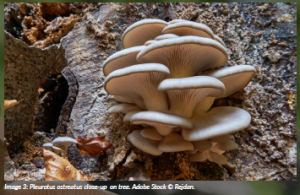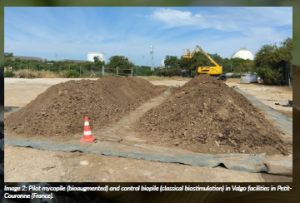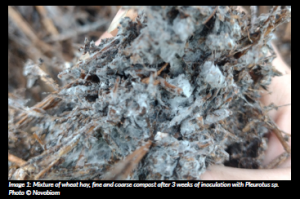Soil contamination is one of the most pressing environmental challenges of the 21st century. Across Europe, millions of hectares of land have been rendered unusable due to pollution from industrial activities, oil spills and improper waste disposal. According to recent estimates, there are approximately 2.8 million potentially contaminated sites across the continent, with 650 000 requiring active remediation (European Environment Agency, 2022). Despite the scale of the problem, only 15% of these sites have undergone treatment, underscoring the need for more effective and sustainable solutions to restore degraded soils.
Among the most persistent pollutants affecting soil health are total petroleum hydrocarbons (TPHs). These contaminants pose a significant risk not only to ecosystems but also to human health, as they can leach into groundwater or accumulate in the food chain. The persistence of these pollutants makes remediation particularly challenging, requiring innovative solutions.
Conventional soil remediation techniques, such as landfilling and thermal desorption, are widely used but present several limitations. Landfilling simply relocates contamination rather than neutralising it, while thermal desorption, although effective in removing pollutants, is highly energy-intensive and generates significant greenhouse gas (GHG) emissions. These limitations highlight the urgent need for a more environmentally friendly, cost-effective and sustainable remediation strategy.
The LIFE MySOIL project tackles these challenges by introducing mycoremediation, an innovative bioremediation technology that leverages fungi’s natural ability to break down complex hydrocarbons. This approach represents a significant step forward in soil restoration efforts, offering a more sustainable alternative to current remediation techniques.
The LIFE MySOIL project: a breakthrough in bioremediation
LIFE MySOIL is a European-funded initiative dedicated to advancing mycoremediation from laboratory research to real-world applications. While bioremediation using bacteria has been widely studied and implemented, its effectiveness in treating long-chain hydrocarbons is limited. Mycoremediation, which employs fungi to degrade organic pollutants, offers a promising alternative due to fungi’s ability to break down persistent hydrocarbons through more diversified degradation mechanisms than those employed by bacteria.
The project is coordinated by Eurecat, a leading research centre with notable capabilities in environmental technologies, in collaboration with key partners from universities, engineering firms and environmental research institutions across Europe. By bringing together experts in soil science, biotechnology and industrial engineering, LIFE MySOIL validates and scales up mycoremediation to provide a viable solution for contaminated soil recovery.
The project is structured around three main pillars: environmental impact, technological innovation and market replication. The environmental goals focus on reducing soil contamination while restoring soil functionality. The technological aspect of the project refines mycoremediation techniques and develops monitoring tools to assess their effectiveness. Lastly, the market replication strategy boosted the creation of guidelines for policymakers and industry stakeholders to facilitate the adoption of mycoremediation.
Mycoremediation: the science behind fungal-based soil recovery
Fungi possess remarkable enzymatic systems that enable them to degrade complex hydrocarbons, making them particularly well-suited for soil remediation. Unlike bacteria, which are often limited in their ability to break down persistent pollutants, fungi produce a broad range of oxidative enzymes that can decompose hydrocarbons into non-toxic compounds. Among these enzymes, laccases and peroxidases play a crucial role in breaking down polycyclic aromatic hydrocarbons (PAHs), a major class of petroleum-based contaminants.
Moreover, fungi modify the bioavailability of inorganic contaminants, making them valuable allies in addressing ecotoxicity issues in contaminated soils. Beyond enzymatic degradation, the mycelial network of fungi helps capture and immobilise heavy metals and other toxic substances, reducing their mobility and preventing further environmental contamination. This process limits the risk of pollutants infiltrating groundwater, supporting broader ecosystem restoration efforts.
Beyond pollution removal, mycoremediation also enhances soil structure and fertility. The extensive fungal mycelium helps improve soil aggregation, water retention and nutrient availability, ultimately restoring soil health and making it suitable for reuse. By integrating these biological mechanisms into scalable remediation strategies, LIFE MySOIL pioneers an approach that not only cleans contaminated soils but also encourages the restoration of soil ecosystemic functions.
Pilot demonstrations: validating mycoremediation at scale
LIFE MySOIL has tested and validated mycoremediation under full-scale conditions. The project has conducted pilot-scale demonstrations at three sites across Europe, each representing different types of contamination and environmental challenges.
In France, mycoremediation was integrated into an existing environmental restoration facility at a site owned by Valgo. This pilot demonstrated the compatibility of fungal-based remediation with current industrial soil treatment processes. In particular, the pilot successfully showcased the upscaled production of carefully designed fungal enrichments. The pilot showcased its operational feasibility and effectiveness in industrial settings by testing mycoremediation alongside conventional techniques.
The second pilot was conducted in Italy on TPH-contaminated soils from a site managed by Eni Rewind. This demonstration was particularly important as it tested the scalability of mycoremediation at an off-site waste treatment plant.
The third pilot was conducted in Spain, where a large-scale biopile system was implemented to treat soil affected by petroleum-derived pollutants. This site was selected due to its high levels of long-chain hydrocarbons, which pose a significant challenge for conventional remediation techniques. The biopiles were inoculated with specially selected fungal strains, and their performance was closely monitored through regular soil sampling and chemical analysis.
Beyond petroleum hydrocarbons, the LIFE MySOIL project has also explored the transferability of mycoremediation to other contaminants. One of the key applications is the treatment of heat transfer fluids (HTF), which are commonly used in industrial processes and can cause severe environmental pollution when released into the soil.
Also in Spain, the feasibility of using fungi to break down these complex chemical compounds was investigated. This approach significantly expands the scope of mycoremediation, offering a natural and cost-effective solution for industries dealing with HTF contamination.
By assessing the technology under different soil and climatic conditions, the project has generated valuable data on the adaptability of mycoremediation across various environmental contexts.
Economic and environmental benefits of LIFE MySOIL
One of the primary advantages of mycoremediation is its cost-effectiveness compared to traditional remediation techniques. Thermal desorption, one of the most widely used methods, can cost upwards of €100 per cubic metre of treated soil. Mycoremediation, in contrast, is projected to remain below €75 per cubic metre, making it at least 25% more cost-efficient. Assuming an average soil density of approximately 1.5 tons per cubic metre, thermal desorption costs exceed €150 per ton, while mycoremediation stays under €112.50 per ton, maintaining its cost advantage. This reduction in costs is primarily due to the lower energy requirements and minimal need for chemical reagents.
Beyond cost savings, mycoremediation is also significantly more sustainable. The process requires 90% less energy than thermal desorption, resulting in a substantial reduction in GHG emissions. Additionally, LIFE MySOIL promotes a circular economy by repurposing agricultural by-products, such as spent mushroom substrate (SMS), as a natural fungal inoculum, a source of nutrients and a bulking agent at the same time. This approach not only reduces waste disposal costs but also enhances soil fertility, contributing to long-term environmental sustainability.
Future prospects and industry adoption
As LIFE MySOIL reaches its end, the project has established a framework for the widespread adoption of mycoremediation in industrial and regulatory contexts. One of the key initiatives has been the development of industry guidelines that provide technical recommendations for implementing fungal-based remediation. These guidelines serve as a reference for policymakers, environmental agencies and remediation companies, helping to standardise best practices.
In addition to regulatory engagement, the project fosters knowledge transfer and industry collaboration. Open days and workshops have been organised to educate environmental professionals on the benefits and implementation strategies of mycoremediation. By equipping stakeholders with the necessary expertise, LIFE MySOIL accelerates the transition from experimental research to full-scale commercial application.
While LIFE MySOIL primarily focuses on petroleum-based pollutants, the principles of mycoremediation can be extended to other contaminants, such as polychlorinated biphenyls (PCBs), pesticides and heavy metals. PCBs, widely used in electrical equipment and industrial applications before being banned, persist in soils due to their resistance to degradation. Preliminary studies suggest that certain fungal species can break down these hazardous compounds, making mycoremediation a potential solution for PCB-contaminated sites in the future.
Looking ahead, the long-term vision of LIFE MySOIL extends beyond soil remediation. The innovative technologies and methodologies developed through this initiative have potential applications in other sectors, such as agriculture, forestry and wastewater treatment. By continuously refining mycoremediation techniques, the project aims to contribute to broader environmental restoration efforts and support the EU’s Green Deal objectives.
LIFE MySOIL represents a paradigm shift in soil remediation, proving that fungal-based solutions can compete with, and even surpass, traditional methods. By addressing key environmental, economic and technological challenges, the project lays the foundation for a greener, more cost-effective approach to soil recovery.
Views and opinions expressed are, however, those of the author(s) only and do not necessarily reflect those of the European Union or CINEA. Neither the European Union nor the granting authority can be held responsible for them.
References
European Environment Agency (2022) Progress in the management of contaminated sites in Europe.
Available at: https://www.eea.europa.eu/en/analysis/indicators/progress-in-the-management-of.
LIFE MySOIL (2023) MySOIL: Fighting soil pollution with EU innovation [YouTube video]. Available at:
https://www.youtube.com/watch?v=hNR8H_wL9go.
Project name
LIFE MySoil
Project summary
The LIFE MySOIL project aims to advance mycoremediation, using fungi to degrade soil pollutants like petroleum hydrocarbons. Its objectives include validating this sustainable bioremediation method through pilot demonstrations across Europe. By refining techniques and developing guidelines, it seeks to achieve cost-effective, eco-friendly soil restoration, reducing contamination and enhancing soil health for widespread adoption.
Project partners
Eurecat coordinates the consortium of the project with the participation of seven associated beneficiaries, including the Madrid Autonomous University and the engineering KEPLER (Spain), University of Tuscia and the project management and engineering Eni Rewind (Italy), the engineering VALGO (France), the fungal provider company Novobiom (Belgium) and the environmental consultancy providing services on monitoring Isodetect (Germany).
Project lead profile
Jofre Herrero holds a PhD in Earth Sciences from the University of Barcelona (2015). He works in the Water, Air and Soil Unit at Eurecat and serves as the technical coordinator of the LIFE MySOIL project, advancing mycoremediation for soil recovery. His research focuses on bioremediation and sustainable environmental technologies to remediate and restore soil and groundwater.
PROJECT CONTACTS
Jofre Herrero
LIFE MySOIL project coordinator Water, Air and Soil Unit, Eurecat
Plaça de la Ciència, 2, 08242 Manresa,
Barcelona
Email: contact@lifemysoil.eu
jofre.herrero@eurecat.org
FUNDING
The LIFE MySOIL is co-funded by the LIFE Programme of the European Union under contract number LIFE20 ENV/ES/000416.
Figure legends
Image 1: Mixture of wheat hay, fine and coarse compost after three weeks of inoculation with Pleurotus sp.
Image 2: Pilot mycopile (bioaugmented) and control biopile (classical biostimulation) in Valgo facilities in Petit-Couronne (France).
Image 3: Pleurotus ostreatus close-up on tree. Adobe Stock © Rejdan.




